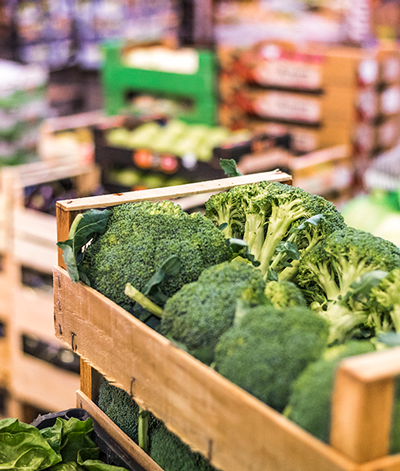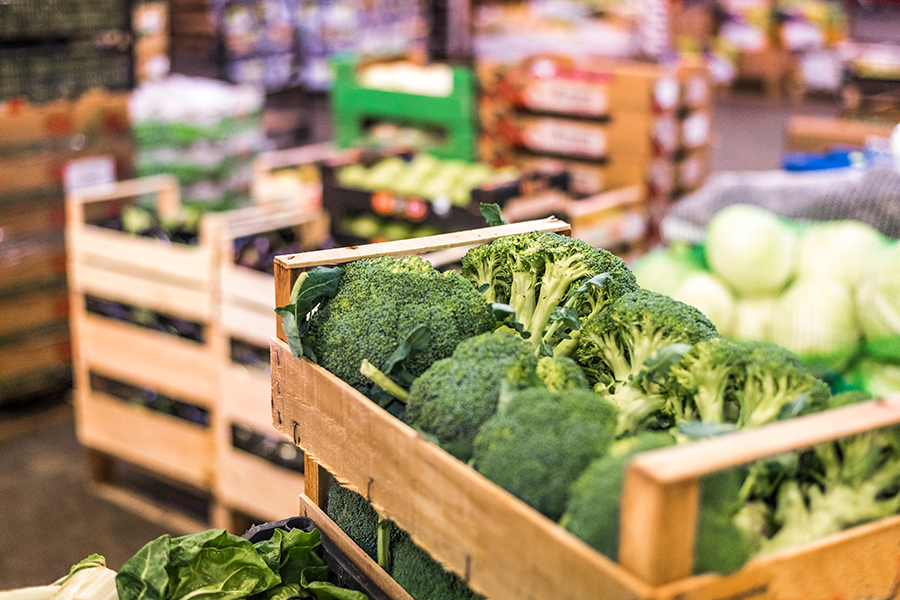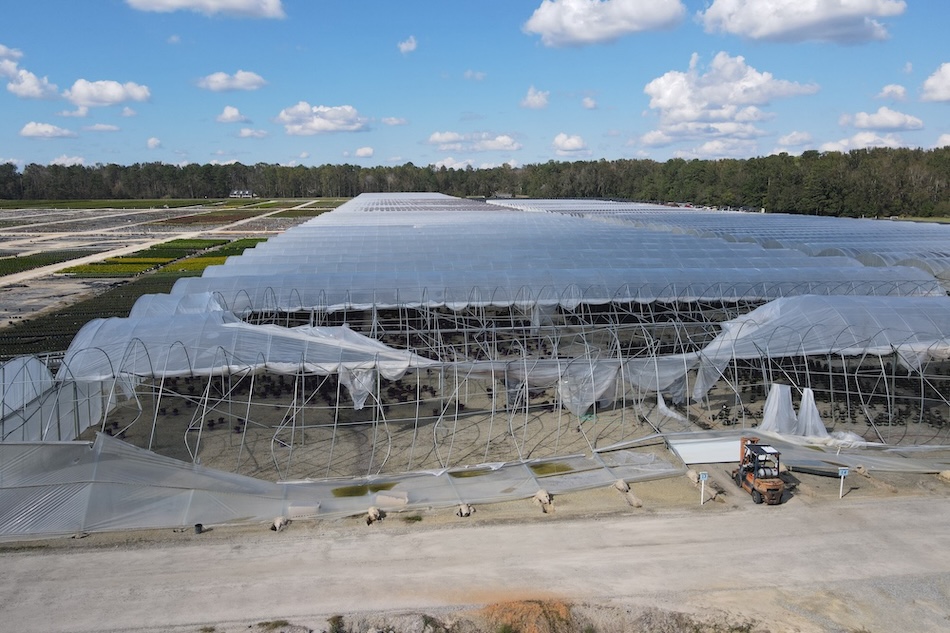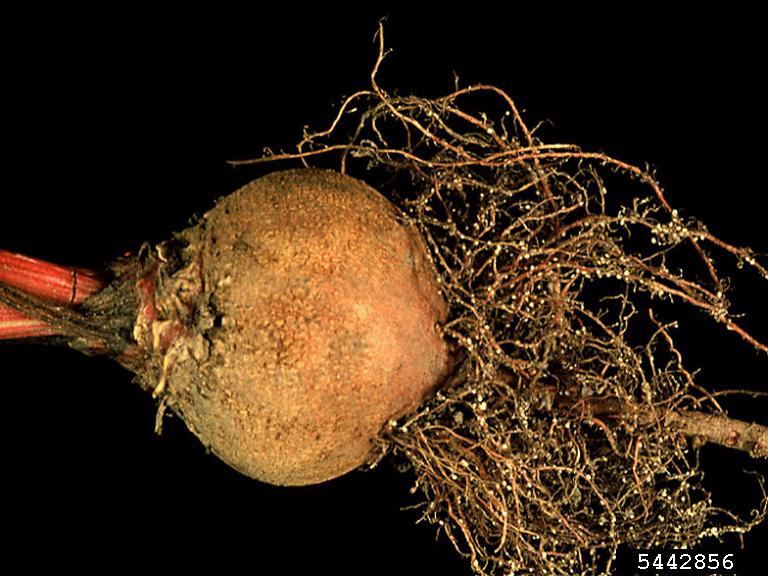
Retail or direct marketing at farmer’s markets, roadside markets, stands and pick-your-own farms is an important and growing method of marketing fresh fruits and vegetables in Georgia. However, many of the containers used in the wholesale trade are not practical for direct marketing to consumers who desire fruits and vegetables in small quantities. The retail marketer has the option of selling his product in small volume containers or by count when scales are unavailable.
Containers available for retail marketing come in a wide range of sizes and materials. Some of the more common retail containers are presented in Table 1.
Table 1. Common Retail Containers
| Common name | Material | Common size(s) |
|---|---|---|
| Bags | paper and polyethylene, often with handles | 1/4 peck to 1/2 bushel |
| Kraft paper bags | Grocery bag – 2/3 bushel No. 20 bag – 8 quarts No. 10 bag – 7 quarts No. 8 bag – 4 quarts No. 2 bag – 1 quart | |
| Baskets | wood | 1/4, 1/2, and 1 peck; 1/2 and 1 bushel |
| Boxes, cartons, and hampers | corrugated paper, often waved, or wood | from 1/2 peck to 1 bushel |
| Fruit and Vegetable Baskets | corrugated paper with handles | 2 to 8 quarts |
| Clamshell containers | plastic | 1/2 pint to 4 quarts |
| Trays | corrugated paper | 6 to 8 quarts (10 to 15 lb) |
Under specific fruit and vegetable crops, retail containers are compared with the more common containers (bushels, lugs, etc.) that are used in the wholesale trade (Tables 2 and 3). In addition, weights and approximate yields for canning and freezing of fruits and vegetables in some of the common retail containers are presented for use in retail marketing. Because processed yields can vary so much based on size of produce and processing method, consider the indicated yields to be approximate values.
Table 2. Weights and Approximate Processed Yields for Fruits
| Product | Retail Volume | Net Weight (lb) | Processed yield |
|---|---|---|---|
| Apples | bushel (bu) | 42 to 48 | 1 bushel = 15 to 18 quart canned applesauce |
| 1/2 bushel bag | 24 | 1 bushel = 30 to 36 quarts frozen applesauce 1 bushel = 10 to 12 quarts juice | |
| peck | 10 to 14 | 1 peck (32 med. apples) = 4 quart canned 1 1/4 to 1 1/2 lb. fresh = 1 pint frozen 2 to 3 lb fresh = 1 quart canned 1 cup pared, sliced = 1/4 lb | |
| Blackberries | 6-quart tray | 10 to 12 | 1 1/2 to 3 lb = 1 quart canned |
| gallon | 5 to 6 | ||
| quart | 1 1/4 to 1 1/2 | ||
| Blueberries | 6-quart tray | 9 to 12 | 2 1/4 to 3 lb = 1 quart canned 1 pint fresh = 1 pint frozen 1 cup = 1/3 lb 1 cup = 1/3 lb |
| gallon | 6 to 8 | ||
| quart | 1 1/2 to 2 | ||
| pint | 3/4 to 1 | ||
| Cherries | lug | 15 to 16 | 2 to 2 1/2 lb = 1 quart canned, unpitted 1 pint = 1 pint frozen, unpitted 1 cup = 1/3 lb |
| quart | 1 1/2 to 1 3/4 | ||
| pint | 1 1/4 to 1 1/2 | ||
| Grapes (with stems) | bushel | 44 to 50 | 1 bu = 16 quarts of juice 1 cup (whole, stemmed) = 1/3 lb |
| lug | 24 to 28 | ||
| 2-quart basket | 2 1/2 to 3 | ||
| Peaches | bushel | 48 to 52 | 1 bu = 18 to 24 quarts canned 2 to 2 1/2 lb = 1 quart canned 1 to 1 1/2 lb = 1 pint frozen 1 cup = 2/5 lb |
| 1/2 bushel bag | 24 | ||
| lug | 19 to 22 | ||
| peck | 12 to 14 | ||
| Pears | bushel | 48 to 50 | 1 bu = 20 to 25 quarts canned 2 to 2 1/3 lb = 1 quart canned 1 to 1 1/2 lb = 1 pint frozen 1 cup pared, sliced = 2/5 lb |
| lug | 21 to 24 | ||
| peck | 12 to 14 | ||
| Plums | bushel | 50 to 56 | 1 bu = 24 to 30 quarts canned 2 to 2 1/2 lb = 1 quart canned 1 cup halves = 1/3 lb |
| peck | 13 to 15 | ||
| Raspberries | 6-quart tray | 8 to 10 | 1 cup = 1/3 lb |
| 3-quart tray | 4 | ||
| quart | 1 1/4 to 1 1/2 | ||
| pint | 3/4 | ||
| Strawberries | 24-quart crate | 36 | 1 lb = 1 pint frozen |
| 8-quart basket | 12 to 15 | ||
| 8-quart flat | 12 | ||
| 6-quart basket | 10 to 12 | ||
| 4-quart basket | 6 | ||
| quart | 1 1/4 to 1 1/2 |
Table 3. Weights and Approximate Processed Yields for Vegetables
| Product | Retail Volume | Net Weight* (lb) | Processed Yield | Comments |
|---|---|---|---|---|
| Asparagus | pyramid crate | 32 | 1 to 1 1/2 lb = 1 pint frozen 3 to 4 lb = 1 quart canned | often sold in bunches weighing 1 1/2 to 2 lb each |
| bushel (bu) | 24 | |||
| Beans, Lima | bushel | 30 | 1 bu = 12 to 16 pints frozen 3 to 5 lb = 1 quart canned | |
| Beans, Snap | bushel | 28 to 30 | 1 bu = 30 to 45 pints frozen 1 1/2 to 2 1/2 lb = 1 quart canned 1 bu = about 15-16 quarts canned | often sold in 1 bushel wirebound wooden crates |
| Beets | bushel, topped | 52 | 1 bu = 35 to 42 pints frozen 2 to 3 1/2 lb = 1 quart canned | often sold in 2-lb bunches with leaves |
| Broccoli | wax boxes | 23 to 25 | 1 bu = 10 to 12 quarts canned 1 lb = 1 pint frozen | commercially, most broccoli is top-iced in wax boxes |
| Brussels Sprouts | carton, loose pack | 25 | 1 quart = 1 1/2 pints frozen | |
| quart | 1 1/2 | |||
| Cabbage | flat crate | 53 to 60 | 3 lb = 1 quart canned sauerkraut 1 lb = 2 cups cooked 1 lb = 4 cups shredded | often sold by the head, varying in size with variety and tightness of head, usually 2 to 6 lb |
| carton | 53 | |||
| Carrots | bushel, topped |
50 1-, 5- or up to 48-lb bags | 1 bu = 32 to 40 pints frozen 2 to 3 lb = 1 quart canned | often sold in bags of varying weights |
| Cauliflower | carton of 9 to 16 heads, trimmed | 18 to 24 | 2 med. heads = 3 pints frozen, or 1 1/2 quarts canned | usually sold as 1- to 1 1/2-lb heads |
| Collards | Sold in a bushel box as bunched leaves, or whole plants in boxes | 18 to 20 | 3/4 – 1 lb = 1 pint | markets desire bunches to weigh 4 lb |
| Corn, Sweet | wirebound wood crates or 4-dozen-ear boxes |
42 to 50 (crates) 24 to 32 (boxes) | 60 ears = 14 to 17 pints frozen 1 dozen ears = 1 to 1 1/2 quarts canned | at markets, usually sold by the dozen which weighs 6 to 8 lb in-husk |
| Cucumbers | bushel | 48 to 50 | 1 bu = 24 quarts of dill pickles | sometimes sold by count |
| Eggplants | bushel | 33 to 35 | sometimes sold by count | |
| Greens | bushel | 18 to 20 | 1 to 1 1/2 lb = 1 pint frozen | mustard, spinach, and turnip often sold in 1- to 1 1/2-lb bunches or bags |
| Kale | bushel | 18 | 1 bu = 6 to 9 quarts canned, 12 to 18 pints frozen | also sold in 1- to 1 1/2-lb bunches |
| Muskmelons | box or bin | 48 | usually sold by count; vary widely in size by variety, 3 to 6 lb each | |
| Okra | tall bushel hamper | 26 to 30 | 1 bu = 17 quarts canned 34 to 40 pints frozen | |
| 12-quart basket | 15 to 18 | |||
| Onions | bag | 40 | ||
| bunch, green – 48 bunches | 15 to 18 | |||
| Peas, English green (unshelled) | bushel | 28 to 30 | 1 bu = 12 to 15 pints frozen 3 to 6 lb = 1 quart canned | |
| peck | 7 to 8 | |||
| Peas, Southern | bushel hamper | 25 | 3 1/2 to 4 = 1 quart | |
| Peas, Edible Pod | peck | 8 to 10 | ||
| quart | 1 to 1 1/2 | |||
| Peppers, Green Hot | bushel box | 28 | 2/3 lb = 1 pint frozen | Often sold by count; large peppers, 80-85 per bu; small peppers, 110 per bu |
| cartons | 16 to 25 | |||
| Potatoes, Irish (mature) | sack | 100 | 1 bu = 20 quarts canned | |
| bushel | 60 | |||
| peck | 15 | |||
| Potatoes (new) | No. 10 bag | 10 | ||
| Pumpkins | pie pumpkins each | 5 to 15 | 3 to 4 lb = 1 quart canned | sold by count or in large bin boxes |
| Jack o’lantern each | 15 to 40 | |||
| Radishes | carton of 30 6-oz film bags | 12 | also sold in bunches of 1/2 to 3/4 lb | |
| Rhubarb | bunch | 2 to 2 1/2 | 1 lb cooked = 3/4 cup | |
| Rutabaga | bushel basket | 56 | 1 lb = 2 2/3 cups diced | usually sold by count |
| peck | 15 | |||
| Squash, Summer | bushel | 40 to 44 | 1 bu = 32 to 40 pints frozen 2 to 4 lb = 1 quart canned | zucchini, crookneck, pattypan, etc. |
| Squash, Winter | small each | 1 to 4 | 3 lb = 2 pints frozen 2 1/2 to 3 lb = 1 quart canned | usually sold by count and may be graded by size such as acorn, butternut, buttercup |
| intermediate each | 6 to 12 | Intermediate includes delicious, golden hubbard, banana | ||
| large each | 15 to 40 | Large includes varieties such as blue hubbard, jumbo banana | ||
| Sweet Potatoes | box (cured) | 40 | 2/3 lb = 1 pint frozen 2 to 3 lb = 1 quart canned | |
| Tomatoes | paperboard box | 25 | 2 1/2 to 3 1/2 lb = 1 quart canned 1 bu = 15 to 20 quarts canned | |
| place pack | 18 to 20 | |||
| Turnips | without tops; mesh bag or bushel | 50 to 56 | 1 lb = 2 2/3 cups diced | 6 to 8 turnips per bunch; roots to be 2 to 3 in. in diameter |
| peck | 12 to 15 | |||
| turnips bunched with tops; sold by the dozen in paperboard box | 18 dozen | |||
| Watermelons | pallet bin | usually sold by count; 36, 45 and 60 are the most common bin counts | ||
| Note. Net weight per container may vary slightly due to variation in product size. Net weight should not be less than the lowest stated weight listed. | ||||
Table 4. Volumes and Conversions
| Unit of measure | Converts to |
|---|---|
| Bushel |
4 pecks 8 gallons (dry) |
| Peck | 1/4 bushel 8 quarts (dry) 538 cubic inches |
| Lug | shallow containers, usually wood, that come in any size |
| Gallon | 4 quarts 231 cubic inches |
| Quart | 32 fluid ounces 58 cubic inches |
| Kilo (or kilogram) | 2.205 lb |
| Liter | 1.057 quarts (liquid) |
Acknowledgments and Selected References
The authors wish to acknowledge the following sources and references, certain tables from which were adapted for use in this publication.
Economic Research Service. (1979). Conversion factors and weights and measures for agricultural commodities and their products. U. S. Department of Agriculture.
Sabota, C. M., & Courter, J. W. (1979). Net weights and processed yields of fruits and vegetables in common retail units (Hort Facts HM-3-79). University of Illinois Cooperative Extension Service.
Magoon, C. E. (1976). Container net weights. United Fresh Fruit and Vegetable Association.
This information was originally prepared by former Extension horticulturists S. C. Myers and Paul Colditz, released by Darbie Granberry and Terry Kelley, former Extension horticulturists, and reviewed by Tim Coolong, Extension coordinator, horticulture.









